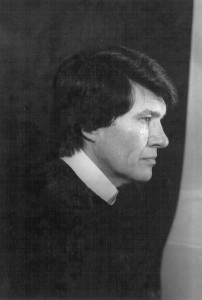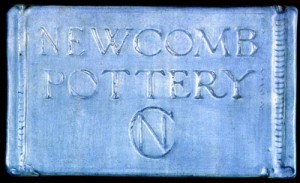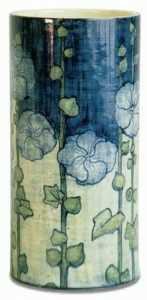
I grew up in the Garden District of Alexandria. One of my strongest memories was of the brick streets and how much fun it was to bounce along on a bicycle, hitting all the grooves and ruts in the bricks. They glistened after a summer rain and should we have snow, they were slicker than…well, you know!
In the late 1920’s, the Minerals Division of the Department of Conservation, with the cooperation of the LSU Experimental Station, conducted a survey of the clay resources in Louisiana. The third report of the survey covered the central portion of the state. All of the clay deposits in this area are either red or blue clay, or a combination of the two. Testing of the samples included plasticity, water of plasticity, linear strength, and tensile strength. Plasticity is the element whereby when wet, the clay can be molded into any shape and retain that shape when dried. Water of plasticity gives the amount of water necessary to produce plasticity in the clay. The results of all of these various tests are arrived at by highly complex mathematical formulae. Suffice it to say that Louisiana abounds in plenteous and valuable outcroppings of clay as evidenced not only by our abundant brick roads, but also by the potteries that have grown up around the state.
Most everyone is familiar with the Shearwater Pottery on the Gulf Coast of Mississippi. We used to take trips to the Pottery when our children were young. They enjoyed watching the potters and choosing a little souvenir of the trip. Shearwater pots have the most beautiful pastel glazes of blues and greens, reflecting the coastal area where they were made.

The outcroppings of Natchitoches Parish include almost every type of clay that can be found in the state. Natchitoches had a large city pottery on the outskirts of town where they made the bricks that still today line the streets of the historic district. The ruins stand abandoned today, but the products remain as a testament to the fine brickwork produced there.
Grant Parish produced some fine clay in the Jackson outcroppings between Packton and Georgetown. Samples taken from this area and just north of Dry Prong proved to be superior to any other deposits found in the parish.

Brickwork for this area was most often produced by the Rapides Brick Company. Many times the bricks were stamped with “Rapides,” indicating the place of manufacture. One of the best clays in the area was found about 3-4 miles south of Glenmora. The samples were light brown in color, with a good plasticity and fast drying. Not only brick but also hollow building material, earthenware, and pottery could be produced from this clay. It had a low firing shrinkage and formed a hard red product when 2,100 degrees firing temperature was reached.
In our modern era of convenience, we prefer for our streets to be smooth and capable of moving traffic at a much faster pace. Most of the brick streets have disappeared from Alexandria. Perhaps this is a good thing…hard to say. It makes for easier street repairs and since our streets seem to be in constant need of repair, we give up the bygone beauty of the brick roadway. But I still remember how pleasing it was to ride my bike down the brick paths of our city on a lazy summer day when life was gentler.









